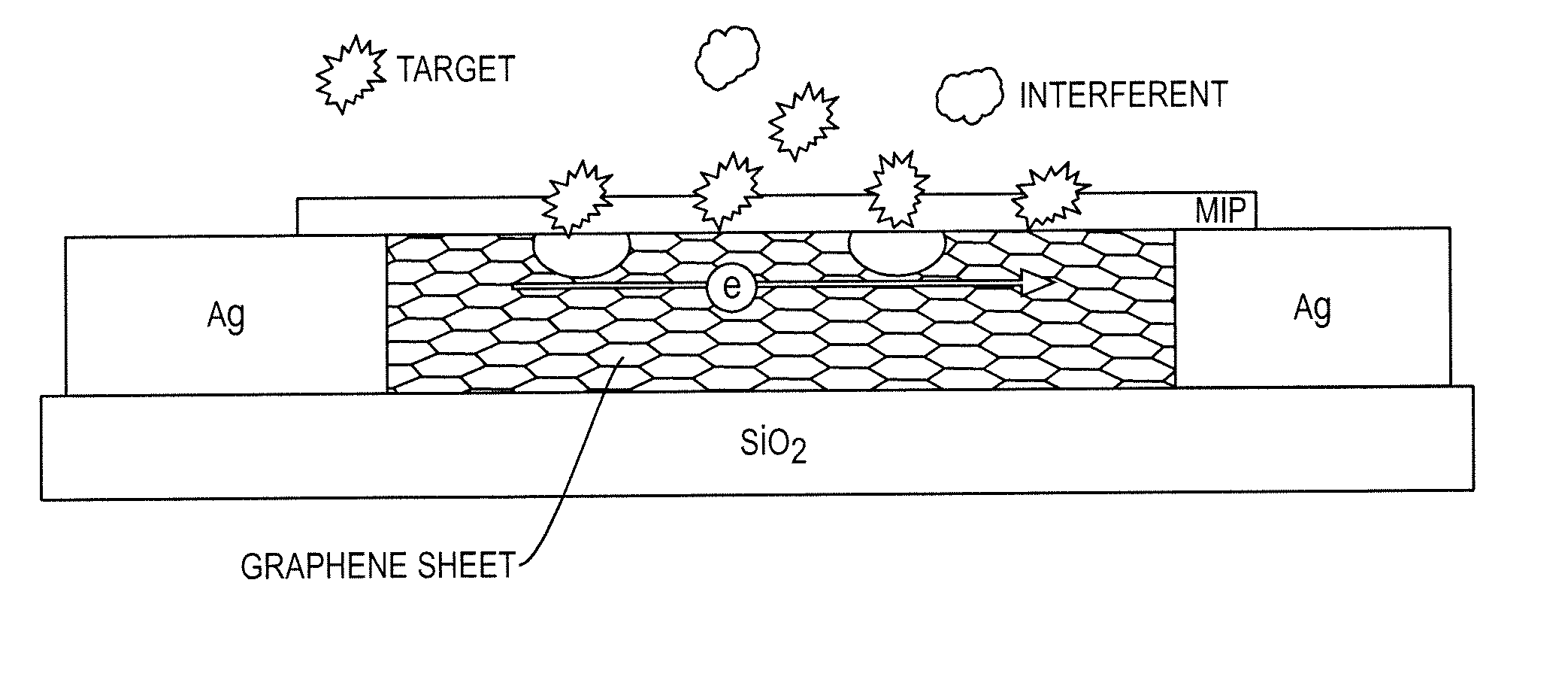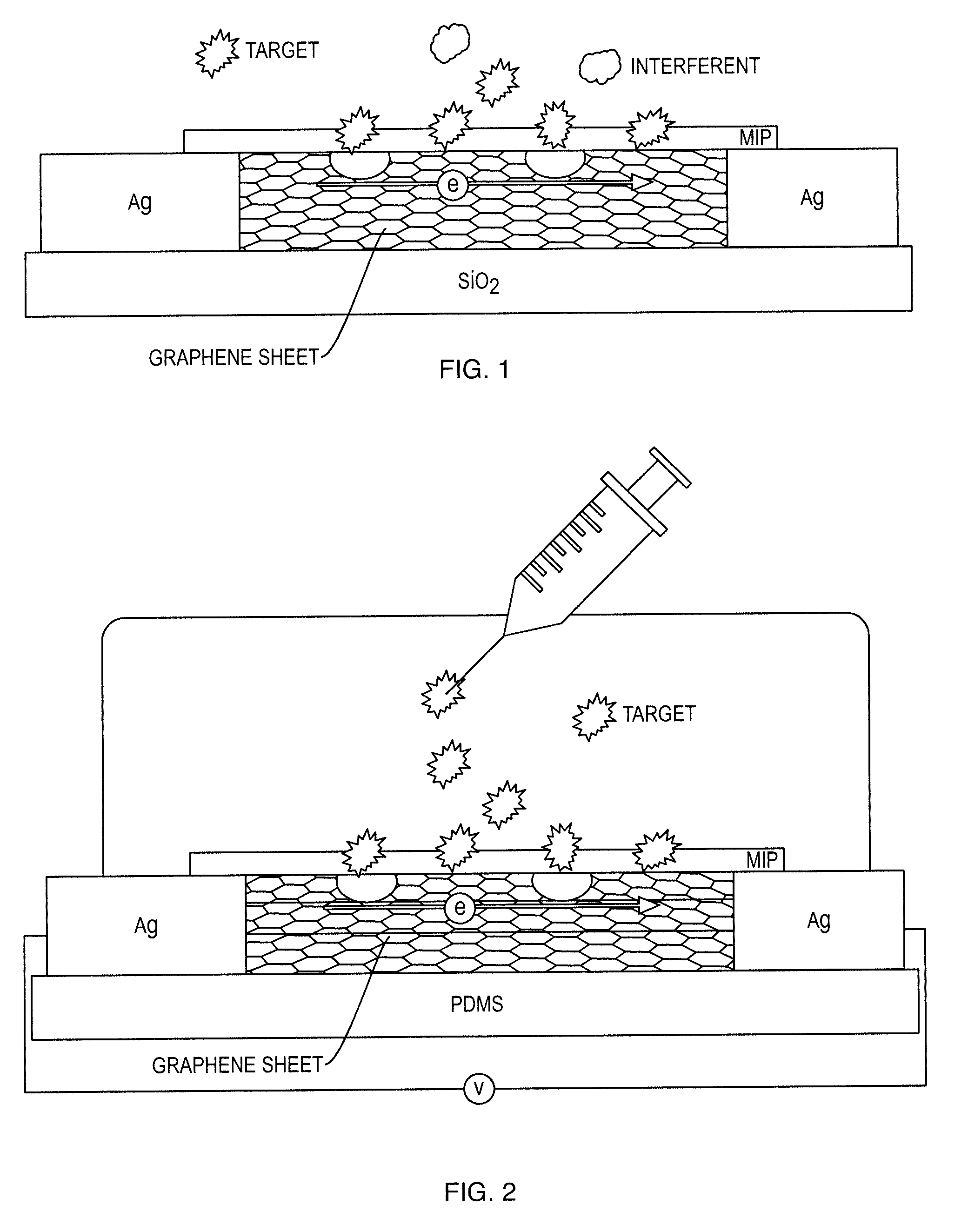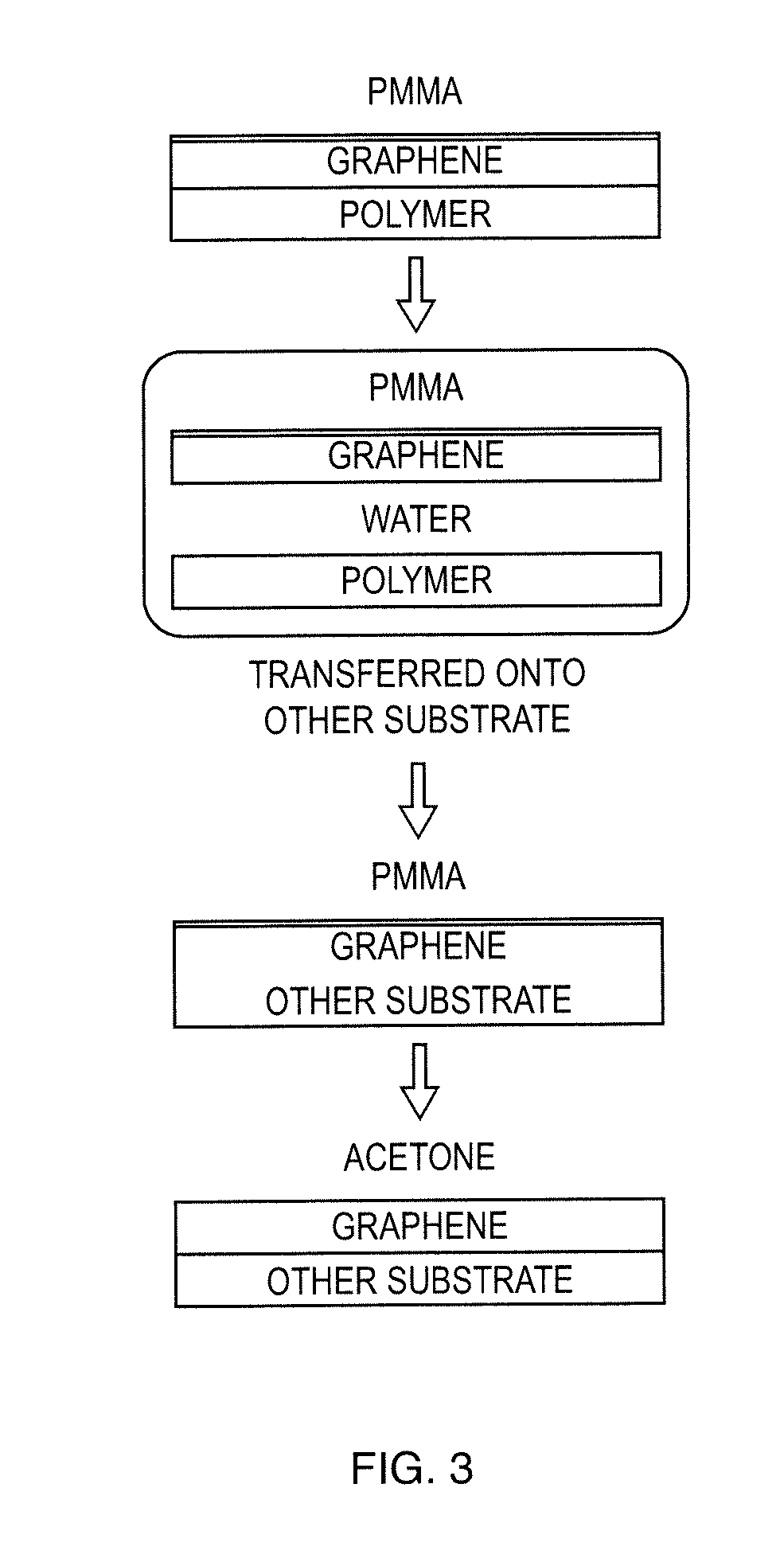Chemical sensor using molecularly-imprinted single layer graphene
- Summary
- Abstract
- Description
- Claims
- Application Information
AI Technical Summary
Benefits of technology
Problems solved by technology
Method used
Image
Examples
Embodiment Construction
[0033]The following detailed description presents the currently contemplated modes of carrying out the invention. The description is not to be taken in a limiting sense, but is made merely for the purpose of illustrating the general principles of the invention, since the scope of the invention is best defined by claims.
[0034]As used herein, the singular forms “a,”“an,” and “the” include the plural reference unless the context clearly dictates otherwise.
[0035]Sensors that combine the selectivity of molecularly-imprinted polymer (MIP) with the sensitivity of a single-layer graphene sheet, providing a synergetic combination of superior sensitivity with high selectivity, are disclosed herein below.
[0036]In one or more embodiments, the sensor of these teachings for detecting and recognizing target molecules includes a layer of molecularly imprinted polymer disposed on a single layer graphene sheet. In some instances, the sensor of these teachings also includes a sensing circuit configure...
PUM
 Login to View More
Login to View More Abstract
Description
Claims
Application Information
 Login to View More
Login to View More - R&D
- Intellectual Property
- Life Sciences
- Materials
- Tech Scout
- Unparalleled Data Quality
- Higher Quality Content
- 60% Fewer Hallucinations
Browse by: Latest US Patents, China's latest patents, Technical Efficacy Thesaurus, Application Domain, Technology Topic, Popular Technical Reports.
© 2025 PatSnap. All rights reserved.Legal|Privacy policy|Modern Slavery Act Transparency Statement|Sitemap|About US| Contact US: help@patsnap.com



